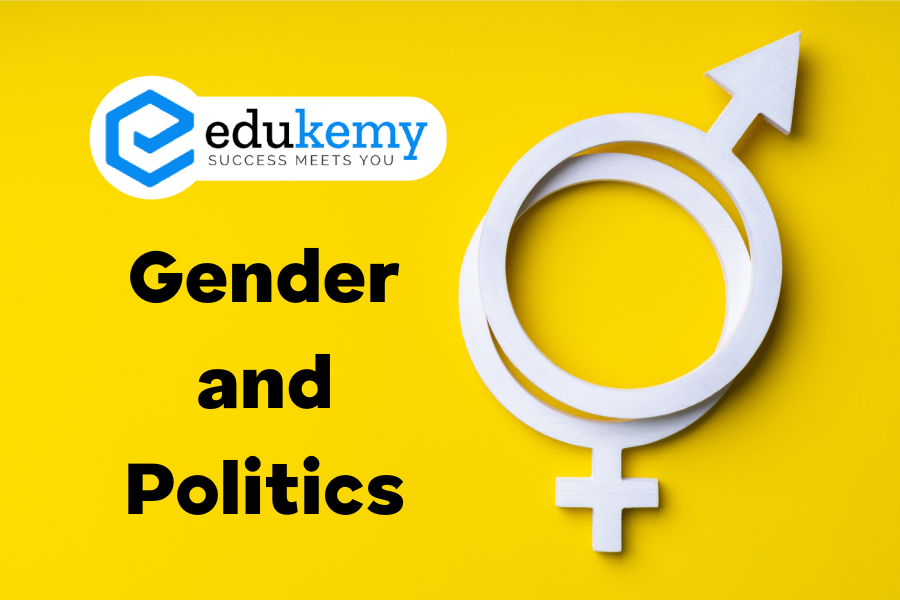
Gender and politics intersect in complex and multifaceted ways, shaping the dynamics of power, representation, and policy-making across the globe. While historically, political spheres have been predominantly male-dominated, the 20th and 21st centuries have witnessed significant strides towards gender equality and the inclusion of diverse voices. Yet, disparities persist, with women and gender minorities often facing barriers to full participation and leadership roles in political arenas. Understanding the intricate relationship between gender and politics is essential for comprehending how social norms, institutional structures, and cultural attitudes influence governance, policymaking, and the pursuit of equitable societies.
Contents
- 1 Gender and Politics: Understanding Policy Choices
- 2 FAQs
- 2.1 Q: What is the gender gap in politics, and why does it matter?
- 2.2 Q: Why are women underrepresented in politics?
- 2.3 Q: What are some strategies to increase women’s political participation?
- 2.4 Q: How does gender influence political decision-making?
- 2.5 Q: What is the significance of intersectionality in understanding gender and politics?
- 3 In case you still have your doubts, contact us on 9811333901.
Gender and Politics: Understanding Policy Choices
Research on Political Reform (2004):
- Esther Duflo conducted a study in 2004 that delved into the political economy of development, specifically examining how the identity of political leaders influences policy choices.
- The research focused on a political reform in India in 1993, known as the 73rd Constitution Amendment Act. This amendment introduced reservations for women in Panchayats (local self-governance bodies) and expanded their powers.
Impact of Female Reservations on Policy Preferences:
- The study, carried out in the states of West Bengal and Rajasthan, aimed to investigate the effects of female reservations on policy preferences and priorities within local governance.
- In West Bengal, where women had more representation in Panchayats, the findings indicated that women were more concerned about issues like drinking water and roads, while men prioritized education.
- In Rajasthan, where reservations were also implemented, women were more concerned about water-related issues but less focused on roads compared to men.
Implications:
- The research shed light on the influence of gender in shaping policy priorities at the local level.
- The different concerns expressed by men and women in various regions underscored the importance of diverse political representation in addressing the multifaceted needs of communities.
- This study contributed to the broader understanding of how gender dynamics within political leadership can impact policy choices, emphasizing the need for inclusive governance structures to address a spectrum of community issues.
FAQs
Q: What is the gender gap in politics, and why does it matter?
The gender gap in politics refers to the difference in political participation, representation, and policy priorities between men and women. It matters because it highlights disparities in power and influence, impacting decision-making processes and policy outcomes. Closing the gender gap in politics promotes equality, diversity, and better reflects the needs and perspectives of all members of society.
Q: Why are women underrepresented in politics?
Women are underrepresented in politics due to various factors including systemic barriers such as gender stereotypes, discrimination, and unequal access to resources like funding and networks. Cultural norms and societal expectations may also discourage women from pursuing political careers. Additionally, the lack of support structures, like childcare facilities, can make it challenging for women to balance family responsibilities with political aspirations.
Q: What are some strategies to increase women’s political participation?
Strategies to increase women’s political participation include implementing gender quotas or affirmative action policies, providing training and mentorship programs for aspiring female politicians, creating supportive environments within political parties, and promoting greater media coverage of women in politics. Additionally, addressing structural barriers such as childcare and flexible work arrangements can enable more women to enter and succeed in political leadership roles.
Q: How does gender influence political decision-making?
Gender influences political decision-making through various mechanisms including differences in policy priorities, leadership styles, and approaches to governance. Research suggests that women tend to prioritize issues such as healthcare, education, and social welfare more than men. Additionally, female leaders may employ more collaborative and inclusive decision-making processes, leading to policies that better address the needs of diverse populations.
Q: What is the significance of intersectionality in understanding gender and politics?
Intersectionality recognizes that individuals experience multiple intersecting forms of discrimination and privilege based on factors such as race, class, sexuality, and ability, in addition to gender. In the context of politics, intersectionality highlights the diverse experiences and perspectives of women from different backgrounds and identities. Understanding intersectionality is crucial for crafting inclusive policies and promoting equity in political representation and decision-making.
In case you still have your doubts, contact us on 9811333901.
For UPSC Prelims Resources, Click here
For Daily Updates and Study Material:
Join our Telegram Channel – Edukemy for IAS
- 1. Learn through Videos – here
- 2. Be Exam Ready by Practicing Daily MCQs – here
- 3. Daily Newsletter – Get all your Current Affairs Covered – here
- 4. Mains Answer Writing Practice – here

